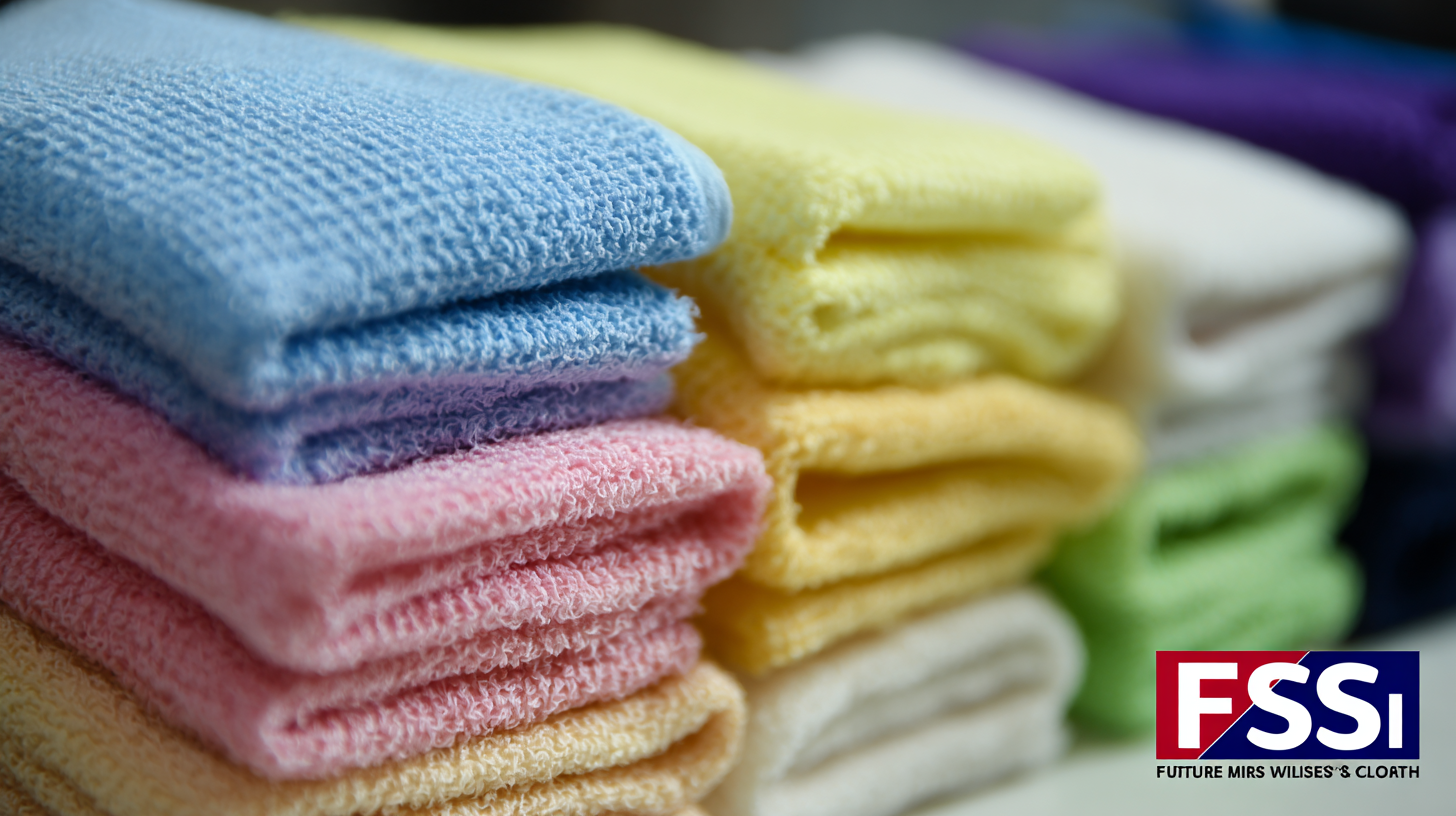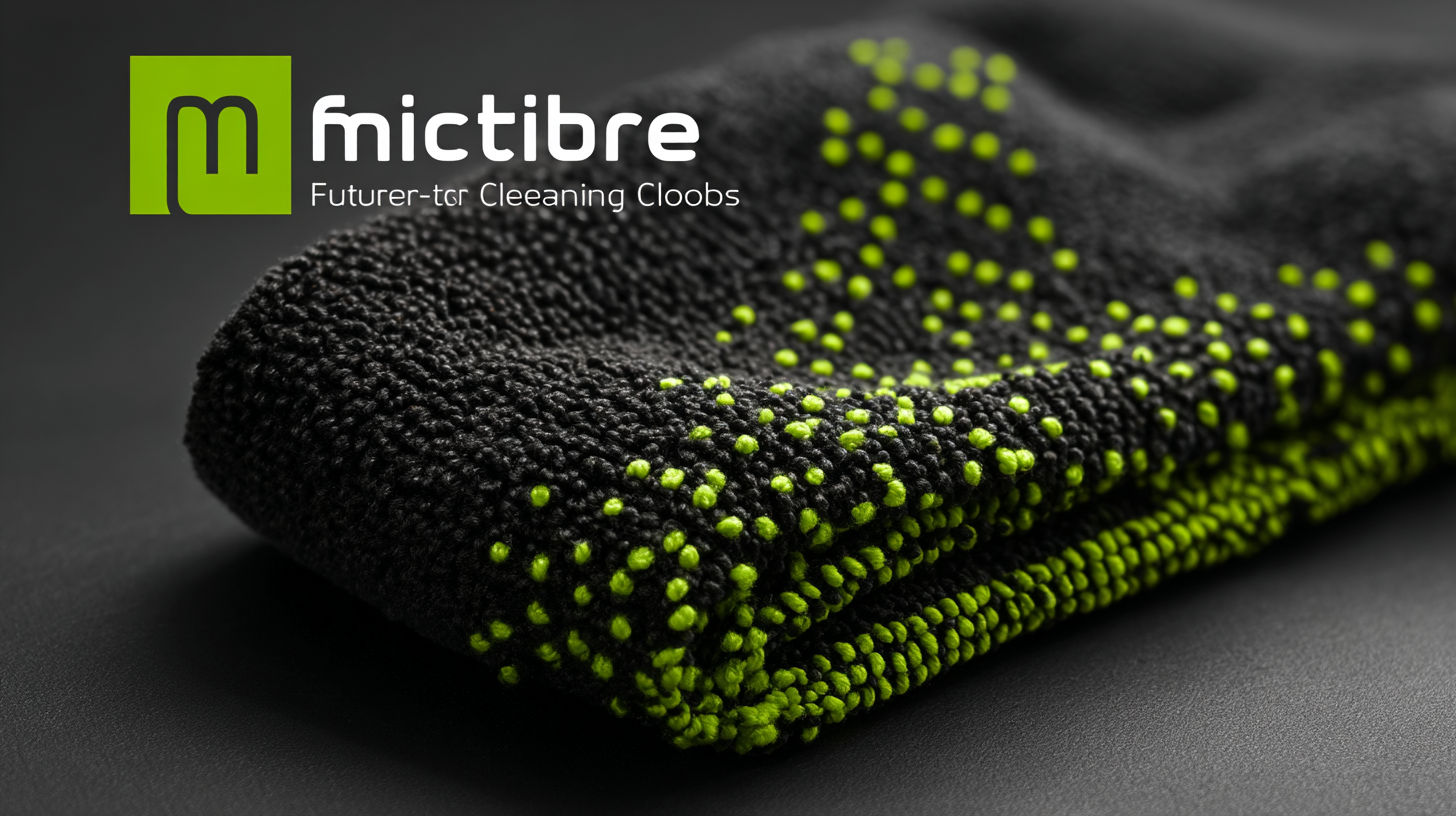Future Market Insights for Best Microfiber Cleaning Cloths in 2025 with Case Studies
The microfiber cleaning cloth market is poised for substantial growth in the coming years, driven by increasing consumer awareness of sustainability and effective cleaning products. According to a recent market research report by Future Market Insights, the global demand for microfiber cleaning cloths is expected to witness a CAGR of over 7% from 2023 to 2025. This surge is attributed to the rising preferences for eco-friendly cleaning solutions across various sectors, including hospitality, automotive, and personal care. Additionally, the unprecedented impact of the COVID-19 pandemic has heightened the focus on hygiene and cleanliness, further boosting the adoption of microfiber cleaning cloths due to their superior absorbency and reusability. With case studies highlighting their effectiveness in reducing the use of harsh chemicals, the future outlook for microfiber cleaning cloths remains robust, making them an indispensable tool in both residential and commercial cleaning applications.

The Growing Demand for Microfiber Cleaning Cloths: Trends and Projections for 2025
As we look toward 2025, the demand for microfiber cleaning cloths continues to rise, propelled by increasing consumer awareness of sustainability and the need for efficient cleaning solutions. With their superior absorbency and ability to trap dirt and dust, microfiber cloths are becoming the go-to choice for both households and commercial spaces. The versatility of these cloths is a significant factor in their growing popularity, with uses ranging from automotive care to home cleaning and electronics maintenance.
To maximize the effectiveness of microfiber cleaning cloths, consider the following tips. First, always machine wash them without fabric softeners, as this can clog the fibers and reduce their cleaning power. Second, avoid using high heat when drying, as excessive heat can damage the microfiber and lead to reduced performance. Lastly, reserve specific cloths for different surfaces—such as one for kitchen use and another for glass—to prevent cross-contamination and ensure optimal cleanliness.
The trend is clear: microfiber cleaning cloths are not just a passing fad; they represent a shift towards more environmentally friendly and proficient cleaning methods. As manufacturers innovate and improve the quality of these products, their market presence is expected to expand significantly in the coming years.
Innovative Technologies in Microfiber Fabric Development: A Case Study Analysis
The microfiber cleaning cloth market is poised for significant growth, driven by innovative technologies in microfiber fabric development. As noted in a recent market report by Future Market Insights, the global microfiber cleaning cloths market is projected to reach a valuation of $1.5 billion by 2025, with a compound annual growth rate (CAGR) of 6.5% from 2020 to 2025. This growth is largely attributed to advancements in microfiber production techniques, particularly the increased use of sustainable materials and eco-friendly practices in their manufacturing processes.
Case studies from leading brands illustrate how these innovations are reshaping the industry. For instance, a prominent manufacturer adopted advanced weaving technologies that enhance the cleaning efficiency of microfiber cloths while reducing water use during production. Their data shows a 30% reduction in water consumption and a significant decrease in carbon emissions. Furthermore, the introduction of nanotechnology in the fabric has improved the cloths' ability to capture dust and dirt at a microscopic level, increasing their effectiveness and lifespan, resulting in a 20% growth in consumer preference towards these products. As these trends continue, the microfiber cleaning cloth market is expected to evolve, offering more efficiency and sustainability.

Environmental Impact and Sustainability: The Future of Microfiber Cleaning Products
As we look towards 2025, the microfiber cleaning cloth market is evolving not only in terms of efficiency but also in its environmental impact. Microfiber cloths, known for their superior cleaning capabilities, have come under scrutiny regarding their sustainability. Traditional microfiber, made from synthetic materials, can contribute to environmental pollution when it sheds microplastics during washing. Therefore, manufacturers are increasingly focused on developing eco-friendly alternatives that minimize negative ecological effects while maintaining performance.
Innovative brands are emerging with solutions that emphasize sustainability. Some companies are utilizing recycled plastics or biodegradable materials to produce microfiber cloths that meet consumer demand for effective cleaning products without compromising the environment. Moreover, these advancements are bolstered by case studies showcasing successful implementations of sustainable practices in manufacturing. By prioritizing environmental impact, the microfiber cleaning cloth market is paving the way for a greener future, thus aligning with the growing consumer expectations for sustainable product choices in their daily lives.
Future Market Insights for Microfiber Cleaning Cloths by 2025
This bar chart illustrates the projected market growth of microfiber cleaning cloths focusing on environmental impact and sustainability from 2023 to 2025. The data shows a significant increase in demand as consumers become more environmentally conscious.
Consumer Preferences and Purchasing Behavior: Insights from 2025 Market Research
As we look toward 2025, consumer preferences regarding microfiber cleaning cloths are expected to evolve significantly. According to a recent market research report by Future Market Insights, 68% of consumers now prioritize sustainability in their purchasing decisions. This shift highlights the growing demand for eco-friendly microfiber options that not only perform well but are also responsibly sourced and manufactured. Additionally, the convenience of online shopping will continue to influence purchasing behaviors, with 75% of consumers indicating that they prefer to buy cleaning products online for the ease of comparison shopping and delivery.
**Tip:** When shopping for microfiber cloths, consider those made from recycled materials, as they not only serve effectively in cleaning but also contribute to reducing environmental impact.
Furthermore, brand loyalty appears to be waning, with more consumers willing to experiment with new brands that offer innovative features. A case study reveals that brands introducing antimicrobial treatments in their microfiber cloths saw a 30% increase in sales over traditional options. This trend suggests that consumers are not only looking for performance but also added functionality that enhances the cleaning experience.
**Tip:** Look for microfiber cloths that promise multi-functionality, such as those designed for both dusting and polishing, to maximize your cleaning efficiency.
Future Market Insights for Best Microfiber Cleaning Cloths in 2025
| Category | Consumer Preference (%) | Purchase Frequency (monthly) | Average Price ($) | Sustainability Rating (1-5) |
|---|---|---|---|---|
| Household | 45% | 5 | 12.99 | 4.2 |
| Automotive | 30% | 3 | 10.50 | 4.5 |
| Industrial | 15% | 2 | 20.00 | 3.8 |
| Electronics | 10% | 4 | 15.75 | 4.0 |
Forecasting Market Growth: Key Players and Competitive Strategies in the Microfiber Industry
The microfiber cleaning cloth industry is poised for significant growth by 2025, driven by innovations and competitive strategies from key players. Companies are increasingly focusing on sustainability and performance, pushing the boundaries of technology to enhance the effectiveness of microfiber materials. As consumers become more eco-conscious, brands that prioritize biodegradable options and reduce waste in production are likely to gain a competitive edge.
For businesses seeking to navigate this evolving market, it’s crucial to stay ahead of consumer trends. Tips for success include investing in research and development to improve product efficacy, as well as implementing robust marketing strategies that emphasize the unique benefits of microfiber cleaning cloths. Engaging with customers through feedback and reviews can also foster loyalty and refine product offerings.
In addition, forming strategic partnerships within the industry can enhance brand visibility and expand market reach. Collaborating with eco-friendly organizations or influencers can amplify positive brand messaging. As the microfiber market evolves, companies must be agile and responsive to maintain competitiveness and seize growth opportunities.

